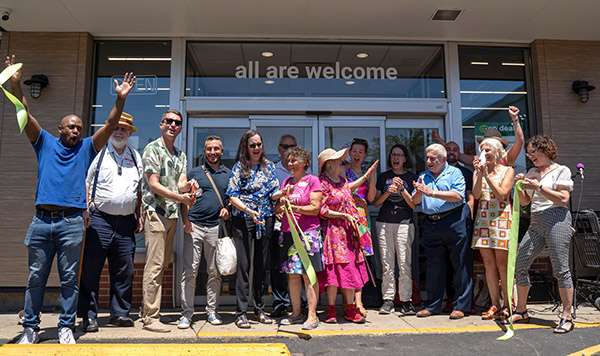New CNT Report Shows How Unused Residential Parking Makes Housing More Expensive
CHICAGO, March 28, 2016 – It’s common to hear Chicago residents complain about the city’s dearth of parking, but new research from the Center for Neighborhood Technology (CNT) has found that parking spaces at many of the city’s apartment buildings sit empty during their peak hours. The cost of that unused parking is often passed on to residents through higher rents.
Released today, CNT’s report Stalled Out: How Empty Parking Spaces Diminish Neighborhood Affordability explores the relationship between unused parking and neighborhood affordability. Many cities, including Chicago, mandate the minimum number of parking spaces new developments need to build. As the report points out, however, these minimum requirements don’t always reflect real demand.
For this study, CNT interviewed multifamily developers in Chicago and went to the parking lots and garages of 40 apartment buildings, both market-rate and subsidized, to see how much parking was being used. Researchers went at 4:00 a.m., when most tenants have parked their cars and are asleep in bed. Consistent with CNT’s findings in the San Francisco Bay Area; Washington, D.C.; and King County, Washington, the study found that:
- The supply of parking exceeds demand. Buildings offered two spots for every three units. According to CNT’s analysis, they only used one for every three.
- As parking supply goes up, much of it sits empty. Apartments with fewer spaces saw a greater percentage of their parking used.
- Apartment buildings near frequent transit need less parking. Buildings within ten minutes of a Chicago Transit Authority (CTA) train stop provided one spot for every two units. Even then, one-third of the spots sat empty.
The high cost of unused parking makes it harder to build connected and affordable communities where people spend less on transportation. It costs $37,300 to build each individual space in an indoor, underground parking garage at an apartment building in Chicago. If we applied these numbers to a 100-unit building near the CTA system, it would add up to $825,000 wasted on unused parking. With affordable housing subsidies stretched thin, and the cost of land near transit carrying an additional premium, those costs make it difficult to build affordable housing in places where people can live without bearing the cost of auto ownership.
“When cities mandate that developments build more parking than they need, everybody loses,” said Kyle Smith, Transit-Oriented Development Manager at CNT and author of the report. “With better data, communities and developers can free up money tied to empty parking spaces and pass on the savings for more affordable housing, which our region desperately needs – especially near the transit system.”
Municipalities are starting to get creative about making sure parking supply is in sync with demand. Neighborhood Affordability highlights 21 different policy and development solutions and examples of places where these solutions are already working. For example, Chicago and its northern neighbor Evanston recently reduced parking requirements around transit for developers that include affordable housing. Developments like Chicago’s 1611 W. Division – with zero parking spaces for its 99 units – show that multifamily housing doesn’t need parking when residents can access transit, car sharing, and bike sharing. When municipalities rethink parking minimums, they can dedicate more money and space to housing their people, not their cars.
Press contact
Steve Perkins, 773.269.4055
steve@cnt.org
The Center for Neighborhood Technology (CNT) is a nationally recognized nonprofit based in Chicago that is a leader in promoting more livable and sustainable cities. CNT’s research, strategies, and solutions are implemented across America to create more equitable and resilient communities.





 Strengthening Transit Through Community Partnerships
Strengthening Transit Through Community Partnerships